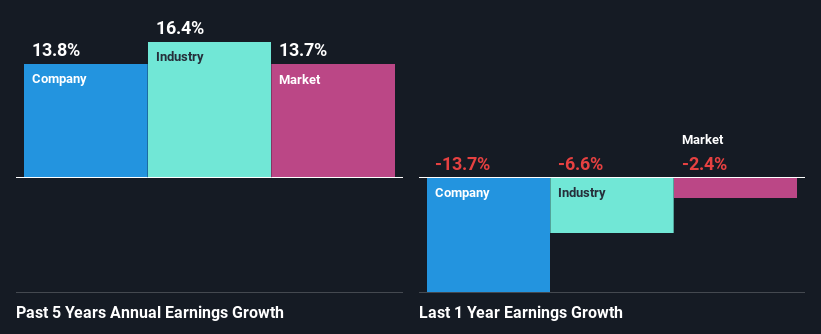Is Thermo Fisher Scientific Inc.'s (NYSE:TMO) Recent Stock Performance Tethered To Its Strong Fundamentals?
Most readers would already be aware that Thermo Fisher Scientific's (NYSE:TMO) stock increased significantly by 15% over the past three months. Since the market usually pay for a company’s long-term fundamentals, we decided to study the company’s key performance indicators to see if they could be influencing the market. Specifically, we decided to study Thermo Fisher Scientific's ROE in this article.
Return on Equity or ROE is a test of how effectively a company is growing its value and managing investors’ money. In short, ROE shows the profit each dollar generates with respect to its shareholder investments.
See our latest analysis for Thermo Fisher Scientific
How To Calculate Return On Equity?
Return on equity can be calculated by using the formula:
Return on Equity = Net Profit (from continuing operations) ÷ Shareholders' Equity
So, based on the above formula, the ROE for Thermo Fisher Scientific is:
13% = US$6.0b ÷ US$47b (Based on the trailing twelve months to December 2023).
The 'return' is the amount earned after tax over the last twelve months. Another way to think of that is that for every $1 worth of equity, the company was able to earn $0.13 in profit.
What Is The Relationship Between ROE And Earnings Growth?
We have already established that ROE serves as an efficient profit-generating gauge for a company's future earnings. Depending on how much of these profits the company reinvests or "retains", and how effectively it does so, we are then able to assess a company’s earnings growth potential. Assuming everything else remains unchanged, the higher the ROE and profit retention, the higher the growth rate of a company compared to companies that don't necessarily bear these characteristics.
Thermo Fisher Scientific's Earnings Growth And 13% ROE
To begin with, Thermo Fisher Scientific seems to have a respectable ROE. Further, the company's ROE is similar to the industry average of 12%. This probably goes some way in explaining Thermo Fisher Scientific's moderate 14% growth over the past five years amongst other factors.
Next, on comparing Thermo Fisher Scientific's net income growth with the industry, we found that the company's reported growth is similar to the industry average growth rate of 16% over the last few years.
The basis for attaching value to a company is, to a great extent, tied to its earnings growth. It’s important for an investor to know whether the market has priced in the company's expected earnings growth (or decline). By doing so, they will have an idea if the stock is headed into clear blue waters or if swampy waters await. Has the market priced in the future outlook for TMO? You can find out in our latest intrinsic value infographic research report.
Is Thermo Fisher Scientific Efficiently Re-investing Its Profits?
Thermo Fisher Scientific has a low three-year median payout ratio of 5.9%, meaning that the company retains the remaining 94% of its profits. This suggests that the management is reinvesting most of the profits to grow the business.
Besides, Thermo Fisher Scientific has been paying dividends for at least ten years or more. This shows that the company is committed to sharing profits with its shareholders. Upon studying the latest analysts' consensus data, we found that the company is expected to keep paying out approximately 6.5% of its profits over the next three years. However, Thermo Fisher Scientific's ROE is predicted to rise to 20% despite there being no anticipated change in its payout ratio.
Conclusion
In total, we are pretty happy with Thermo Fisher Scientific's performance. In particular, it's great to see that the company is investing heavily into its business and along with a high rate of return, that has resulted in a sizeable growth in its earnings. That being so, a study of the latest analyst forecasts show that the company is expected to see a slowdown in its future earnings growth. Are these analysts expectations based on the broad expectations for the industry, or on the company's fundamentals? Click here to be taken to our analyst's forecasts page for the company.
Have feedback on this article? Concerned about the content? Get in touch with us directly. Alternatively, email editorial-team (at) simplywallst.com.
This article by Simply Wall St is general in nature. We provide commentary based on historical data and analyst forecasts only using an unbiased methodology and our articles are not intended to be financial advice. It does not constitute a recommendation to buy or sell any stock, and does not take account of your objectives, or your financial situation. We aim to bring you long-term focused analysis driven by fundamental data. Note that our analysis may not factor in the latest price-sensitive company announcements or qualitative material. Simply Wall St has no position in any stocks mentioned.

